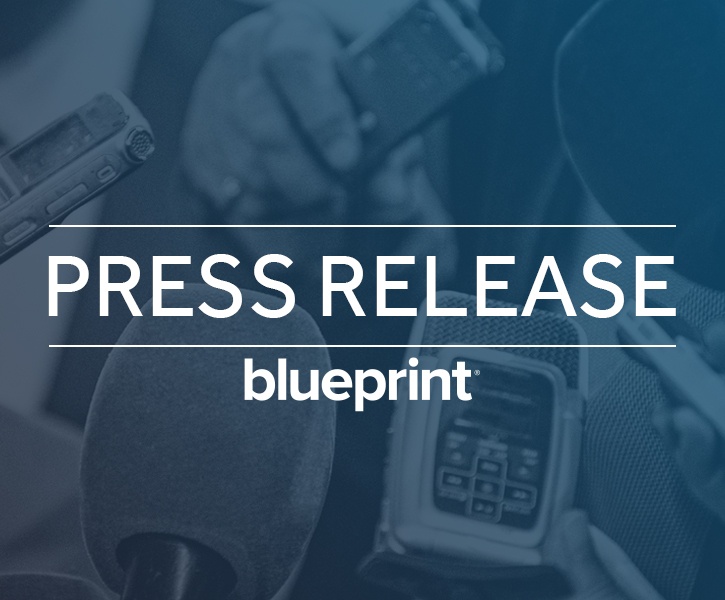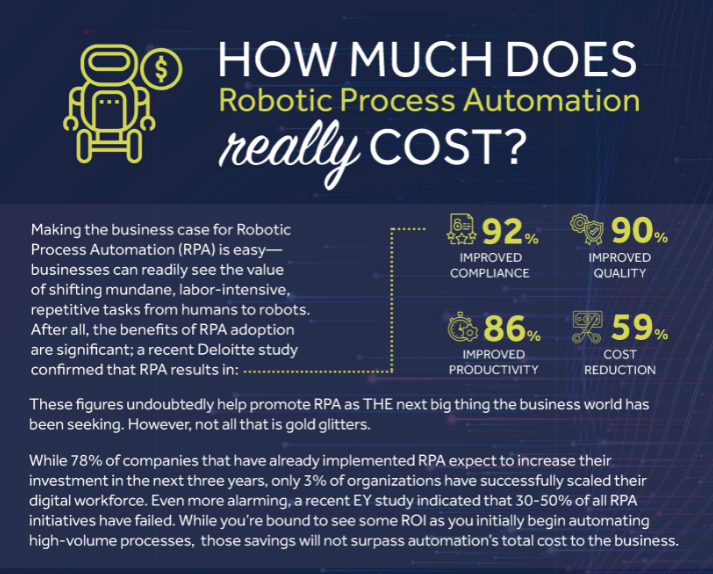How RPA Fosters an Improved Business and IT Relationship
For many businesses, processes require some level of human intervention. This can be anything from looking up information in a corporate system, to reviewing paper-based documentation, or coordinating with another human to complete a task. This means that the quality and effectiveness of these processes are dependent on the speed, accuracy, and effectiveness of a human worker.
Often, the activities that require human intervention are repetitive, manual, time-consuming, and as a result, are prone to error. Still, organizations may be hesitant to step back and change the way they've been working because of time constraints, limited resources, higher priorities, or a lack of funding.
That's where Robotic Process Automation (RPA) comes in.
RPA allows businesses to lean into automation so that employees can focus on value-add activities related to critical business processes instead of spending time on repetitive manual tasks.
The Problem with Misalignment
Let's go back to a time before RPA.
The business side of the organization relied on IT to provide enhanced automation solutions. But frequently, these solutions weren't optimized to address the business' specific challenges. If business stakeholders required changes to be made, they would need to coordinate with IT to determine requirements, secure sufficient funding, and find resourcing. This usually took months to complete, further delaying the implementation of their optimized solution.
As a result, business stakeholders were incredibly frustrated with IT because of how long it would take to implement an optimized process. And IT stakeholders were incredibly frustrated with the business side because supporting one-off projects was nearly impossible when trying to keep critical technology running.
The friction between these two groups is common in many organizations. However, when these groups are not aligned, costly mistakes are made, which leads to delayed delivery of automated solutions. Also, business stakeholders are more likely to leverage "shadow IT" - external technology for support.
The Alignment of Business and IT (the better approach)
Many of today's automation tools enable business users and citizen developers to design automation solutions without requiring IT to perform the work. This offloads the requirements gathering and automation to the business, allowing IT to stay focused on their value-add tasks. But, this doesn't mean that IT doesn't need to be involved - it most certainly does.
There are many critical elements of transitioning a citizen-developed automation solution into production that relies on the support of IT.
But breaking down work like this has proven to significantly improve the relationship between business and IT into a collaborative one that is focused on fostering speed, independence, and goodwill.
However, getting business stakeholders and citizen developers to design automation solutions requires more than imagination and a basic understanding of the process. To do this properly, teams must be equipped with the right tools that will support both sides equally. The non-technical stakeholders require an easy-to-use tool that leverages drag-and-drop features and is highly visual. In contrast, the technical stakeholders need a tool that easily integrates with their production environment.
Blueprint enables non-technical stakeholders to rapidly visualize, design, and optimize critical business processes. It seamlessly integrates with leading RPA vendors so teams can quickly load optimized processes, along with any constraints and attachments, from Blueprint into their RPA tool of choice. This gives IT an invaluable headstart before bot production. It saves them tons of time that would have otherwise been spent doing their own analysis into processes and translating that into their RPA tool.
Besides having the right tools, an RPA center of excellence (CoE) is critical to the success of both teams. The CoE ensures governance over the bots being created, guarantees the automations adhere to business policies, procedures, and protocols, and monitors the production environment where the bots are being run.
RPA allows companies to improve processes and become more agile. It enables organizations to balance the workload required to design and deliver automation between business stakeholders and IT. This accelerates the delivery of automations and removes the dependencies between both stakeholder groups, generating an improved relationship between business and IT.
Share this
Recent Stories

The Top Automation Challenges Facing Enterprises in 2020

RPA Lifecycle Management




